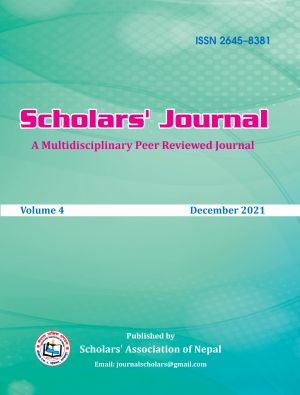Contribution of Value Added Tax to Gross Domestic Product of Nepal
DOI:
https://doi.org/10.3126/scholars.v4i1.42481Keywords:
Economy, growth, revenue, relationship, GovernmentAbstract
Value Added Tax (VAT) is a consumption tax, levied at each stage of the consumption chain and born by the final consumer of the product or service. Gross domestic product (GDP) is the standard measure of the value added created through the production of goods and services in a country during a certain period. This study investigated the contribution of VAT to gross domestic product in Nepal from 2001 to 2019 based on empirical evidences. To meet this objective, time series macro economic data of GDP and VAT were used. Data were collected through the economic survey from Ministry of Finance. Ordinary Least Square technique was employed to test the hypotheses formulated. The result shows that VAT contributes significantly to GDP. During the periods under review, the growth rate of VAT was 17.42% on average and the average ratio of VAT revenue to that of GDP was 4.38%. The findings also reveal that there is the existence of both positive and strong relationship between VAT and GDP. Hence, Government of Nepal should search for the way to boost the revenue from VAT by mostly supporting with the configurations of networks among all the agencies of government and taxing authorities of the federal level, each province and local bodies in order to meet the growth and to facilitate public services for the country.
Downloads
Downloads
Published
How to Cite
Issue
Section
License
Copyright (c) 2021 Shiva Dutta Chapagai

This work is licensed under a Creative Commons Attribution-NonCommercial 4.0 International License.
Copyright © The Authors

